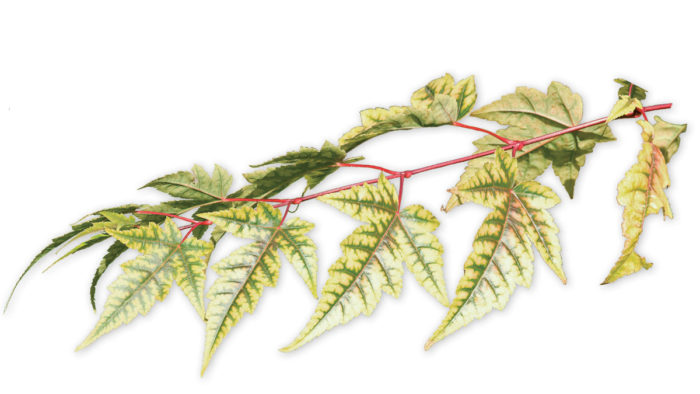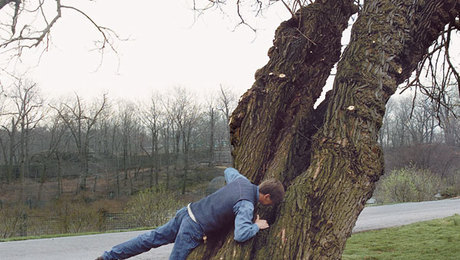
These popular landscape trees generally start declining within one to two years of planting.
1. What it looks like
Leaves turn yellow, but the veins remain green.

2. How to diagnose it
It’s best to start with a soil test that includes pH and cation exchange capacity (CEC).
3. What causes it
Chlorosis in these trees is usually due to nutrient deficiencies associated with high soil pH (usually high 6’s and above). For red maple (Acer rubrum and cvs., Zones 3–9) the issue is manganese deficiency; for pin oak (Quercus palustris and cvs., Zones 4–8) the problem is reduced iron uptake.

4. How to treat it
CEC influences the soil’s ability to hold onto essential nutrients but also buffers the soil against pH changes. You can reduce soil pH by adding elemental sulfur, but the change is usually slight and temporary. Also, the effectiveness of sulfur in lowering soil pH decreases as CEC increases. If your CEC is in the midteens, it may be possible to lower pH by one unit, but as soil CEC gets higher, it becomes more difficult to make a dent in the pH. Arborists can treat iron-deficient pin oaks and manganese-deficient red maples with trunk-injected nutrients. Bear in mind, though, that they are essentially treating the symptom (chlorotic leaves) but not addressing the underlying problem (an above-optimum pH). This is a case of the wrong tree in the wrong spot.
From Fine Gardening #194

















Comments
Log in or create an account to post a comment.
Sign up Log in